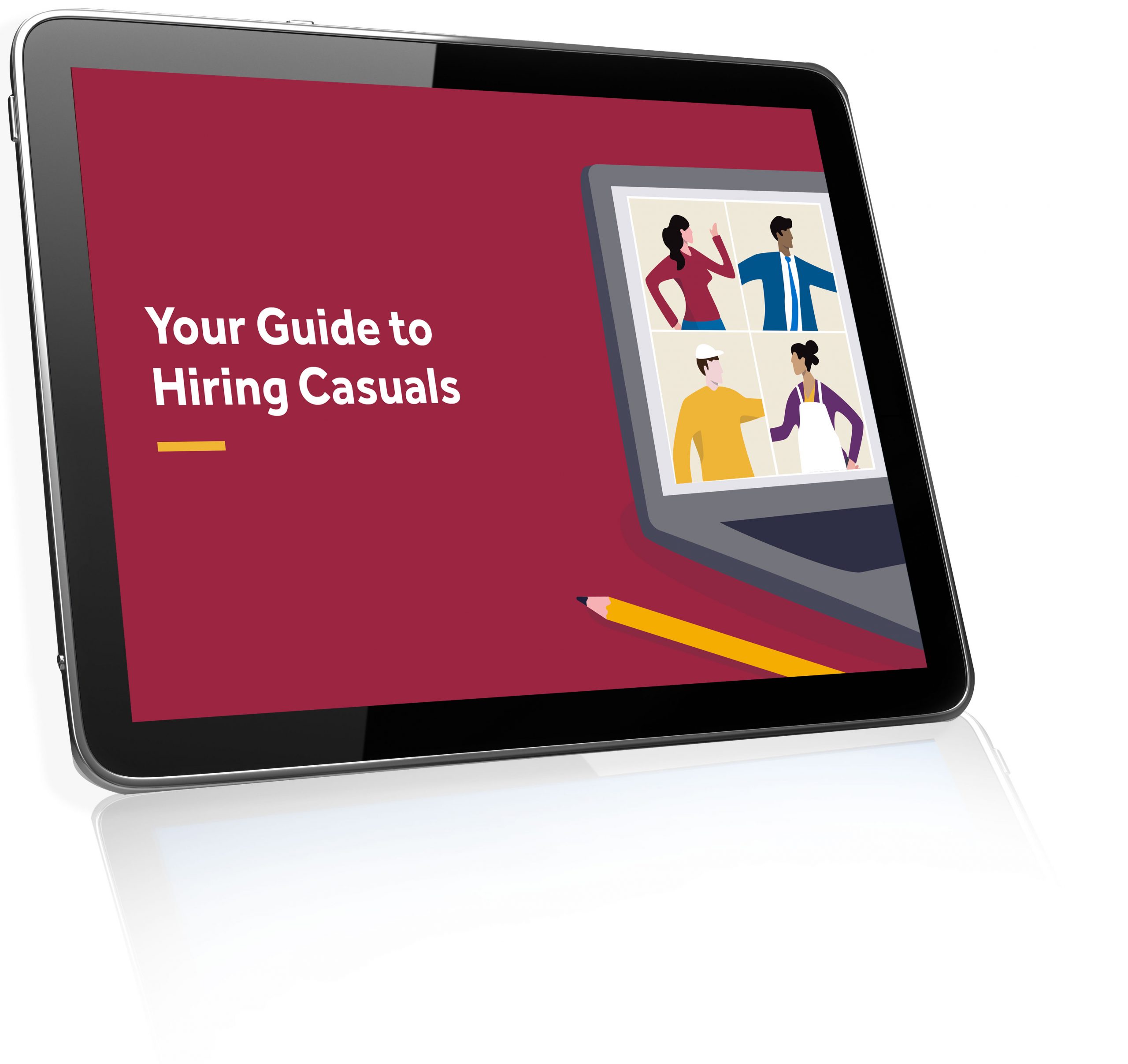
Australia is home to over 3.5 million small businesses. They employ half the workforce in Australia. They also make significant contributions to the economy, collectively accounting for one fifth of Australia’s gross domestic product. Clearly, small businesses form an inherent part of the economy and community and are vital for our growth. However, these small businesses face common challenges in understanding employment relations or implementing HR policies.
The workplace is changing dynamically. Workplaces need to reflect the shifts in attitudes. Understanding these attitudes and addressing them by updating HR policies and manuals can help set clear standards, support your employees, and protect your business.
What is a HR policy?
Human Resources (HR) policy is the key document guiding employees, leaders, and employers about what’s expected of them. A HR policy is a guideline for hiring, leave, training, onboarding, probation, promotion, work environment, termination, and workplace health and safety. HR policies ideally outline how a business should treat its employees and how employees should treat each other.
HR policies are usually outlined in the Employee Handbook.
What is the purpose of a HR policy?
When things go wrong in a business, and they usually do, you need some protection. This protection often comes in the form of HR policies. They act as a fallback for employers should they need support. They also offer a framework for a company so employers and managers can make consistent decisions and treat everyone fairly.
HR policies give your business the structure it needs in employment relations.
Other purposes include:
Communicating the company’s mission, values, and goals
Establishing conditions of employment
HR policies also help you meet the laws and regulations set by government and legislative authorities.
HR policies and small business
Small businesses grow organically, usually without addressing internal policies or implementing systems. As a small business owner, you may be overwhelmed by the daily challenges of administration and compliance. You may be struggling with recruitment and keeping up with obligations as the end of the year approaches.
If you are a small business owner, you end up trying to manage everything on their own. You are personally involved in handling staff disputes, managing employees, providing customer service, and knowing the correct wages. If your business does not have HR policies and procedures, you can end up getting involved in potential legal situations or claims.
Small business owners in the US are spending 25% of their time handling payroll and workers’ compensation, according to the US Small Business Administration. This is time that can be used somewhere else constructively if they have policies and procedures in place.

Disadvantages of not having HR policies
Employees can take advantage of inconsistencies
Risks of unfair dismissal claims
No set standards
Can lead to employee disputes
Business is open to claims and liabilities
Must-have HR policies
What are the must-have HR policies that can help your business function efficiently?
Work Health and Safety (WHS) Policy
A Work Health and Safety (WHS) Policy outlines health and safety procedures and the responsibilities of employers and employees to keep themselves and the workplace safe. WHS policies are important as work-related injuries or illnesses can occur in any industry, occupation and state or territory. You have a legal obligation to provide a safe workplace to all employees. If your employee gets injured at the workplace, then they may be liable for compensation and support.

Did You Know?
Safe Work Australia data shows that 120,000 workers are compensated for a serious work-related injury or illness each year.
Businesses across Australia have reported that they need support to meet increasing compliance requirements, highlighting the need for WHS policies and awareness among employees.
Workplace injuries can also affect your business in various ways such as:
Sick pay
Leave
Replacement costs
Increased premiums
Decreased productivity
A WHS Policy should include:
Your obligations
Employee duties
Ways to record accidents/injuries
Training for managers and employees
Consequences if employees do not follow the steps outlined in the company WHS policy
WHS Policies for businesses may depend on the state or territory your business is based in.
Work from Home (WFH) Policy
Flexible working or remote working has taken off after the pandemic. Workplaces are adopting different models of working, depending on their industries. Whether you have a hybrid model or remote model of working, having a clear and specific work from home policy is crucial. There is a need to offer clear instructions around remote employee performance. How an employee works, where an employee works, the data they can access, the process of their daily check-ins, etc should all be mentioned in your Work from Home (WFH) policy.
A WFH Policy should include:
A checklist to confirm remote working set-ups
WHS obligations (for purposes of WHS laws, when an employee works from home, their home becomes their workplace, and the employer is legally obligated for their health and safety)
The process to submit WFH requests
The eligibility/conditions for WFH
Remote/hybrid set-ups and conditions
Security guidelines (storage of company data, accessing company data, using public WI-FI)
Bullying and Harassment Policy
Did you know that you may be legally responsible if an employee harasses another employee at your workplace?
If you’re a person conducting a business or undertaking (PCBU), you have a positive duty under the model WHS laws to do all you reasonably can to eliminate or minimise the risk of harassment at work. This includes sexual harassment between workers, and from other people at the workplace, like customers or clients.
Bullying and harassment can cause potential psychological and physical harm, making it a risk to health and safety.
A bullying and harassment policy should include:
What constitutes as bullying
What constitutes as harassment (outline different types of harassment-racial and sexual)
Acceptable standards of workplace behaviour
Duty of care (your duty of care as an employer during work-related events)
Systems to respond to complaints of bullying and harassment
Consequences of not complying with bullying and harassment policy
Leave Policy
Small businesses need all the help they can get and during seasonal busy periods, having a leave policy can be valuable. An effective leave policy informs employees about their leave availability and options.
A Leave Policy should include:
Different types of leave available (sick, personal, annual, grievance, stress, long-service, parental, etc)
The leave available for each employee (number of personal days left, sick leave available etc)
Options if they do not have enough leave to cover their leave application
Process to apply for leave (including taking half-days)
Process to inform manager/supervisor
Processes to inform manager/supervisor if they need to take emergency leave
Managing annual shutdown periods
Timeline to apply for annual leave and expected approval timeline
Drugs and alcohol Policy
As a PCBU, you must manage health and safety risks, including setting specific policies around the use of drugs and alcohol. There’s a legal blood alcohol level in some jobs, including road and rail transport, maritime and mining occupations. The law may also prohibit a worker from being affected by any drugs- legal or illegal.
A drugs and alcohol policy must include:
Drug and alcohol testing (some companies have policies to test their workers for alcohol and illicit substances, if a worker could kill or seriously injure themselves or someone else)
Expectations around drug and alcohol usage at the workplace (including drugs and alcohol consumption at work events and parties)
Legal blood alcohol level (if applicable)
Zero-tolerance approach (emphasise this if applicable)
Consequences of failing to meet the standards
Social media Policy
79% of all Australians are using social media and 35% of them are checking it more than five times a day. These numbers demonstrate the growing pervasiveness of social media at work. Businesses need to directly address social media usage and how their employees access social media at work.
Did you know that employers may also be held accountable for the comments or actions of employees on their personal social media?
A social media policy should include:
Highlight a code of conduct in relation to bullying and harassment
Define what is and isn’t acceptable (damage to employer’s interests or likely to negatively impact organisation and staff)
Scope of the policy (is it acceptable after work hours, is it applicable on activity undertaken on an employee’s personal computer/devices etc)
Consequences of breaching the policy
Other policies
Businesses can no longer risk ignoring policies and procedures. They must ensure they cover all bases and offer clear instructions to employees and employers to deal with all situations.
Employee Handbook
An employee handbook is a go-to document for all businesses outlining relevant workplace policies and procedures. The employee handbook, also called employee manual, sets out the expectations and obligations for employers and employees.
All your policies should be clearly specified in the employee handbook. The handbook is also a work-in-progress as it gets updated depending on the situation and trends surrounding your business.
What should your employee handbook include?
Company mission, values, and goals
Position description- job titles, duties, and hierarchy charts
Recruitment process- hiring and recruiting, including employment contracts
Orientation and induction- how to induct new employees
Probation- probation period and duties, time period, and probationary reviews
KPIs- Key performance indicators for all roles
Hours of work- regular hours of work, what is overtime, rosters or shifts if applicable
Holidays- Public holidays
Payroll- paydays, payslip information, timesheets, perks, benefits, or discounts
Leave- annual, sick, parental, maternity, paternity, long service, leave without pay, how to apply for leave,
Promotion- promotion process, how to internally promote or shift personnel
Termination- handling redundancy, firing, or resignation
Offboarding- offboarding process, exit interviews
Privacy- confidentiality and intellectual property
Dress code
Code of conduct
Travel and expenses- reimbursement, how to lodge a claim
IT- Accessing devices or IT support
Performance Management- Managing performance, reviews, and PMP (Performance Management Plans)
Learning- Internal opportunities for employees to upskill or learn, secondment
Disciplinary action- when to consider disciplinary action, processes
Alcohol and drugs policy
Grievance procedure- How can employees raise concerns
Safety- WHS policies
General administration- contact details, emergency numbers etc
Communicating the employee handbook
Your employee handbook should be available on all company platforms or intranet. If the policy gets updated, share this information repeatedly so you have evidence of change and clear communication.
How can Employsure help you?
Having HR policies or employee handbooks are only half the battle won. If you have policies and procedures but don’t follow them or update them or take consistent action, then you may end up wasting time and money on claims or legal situations. Employsure has worked with 30,000 business owners across Australia and New Zealand in matters of employment relations and work health and safety.
Call our 24/7 Advice Line today to get all your questions answered.







